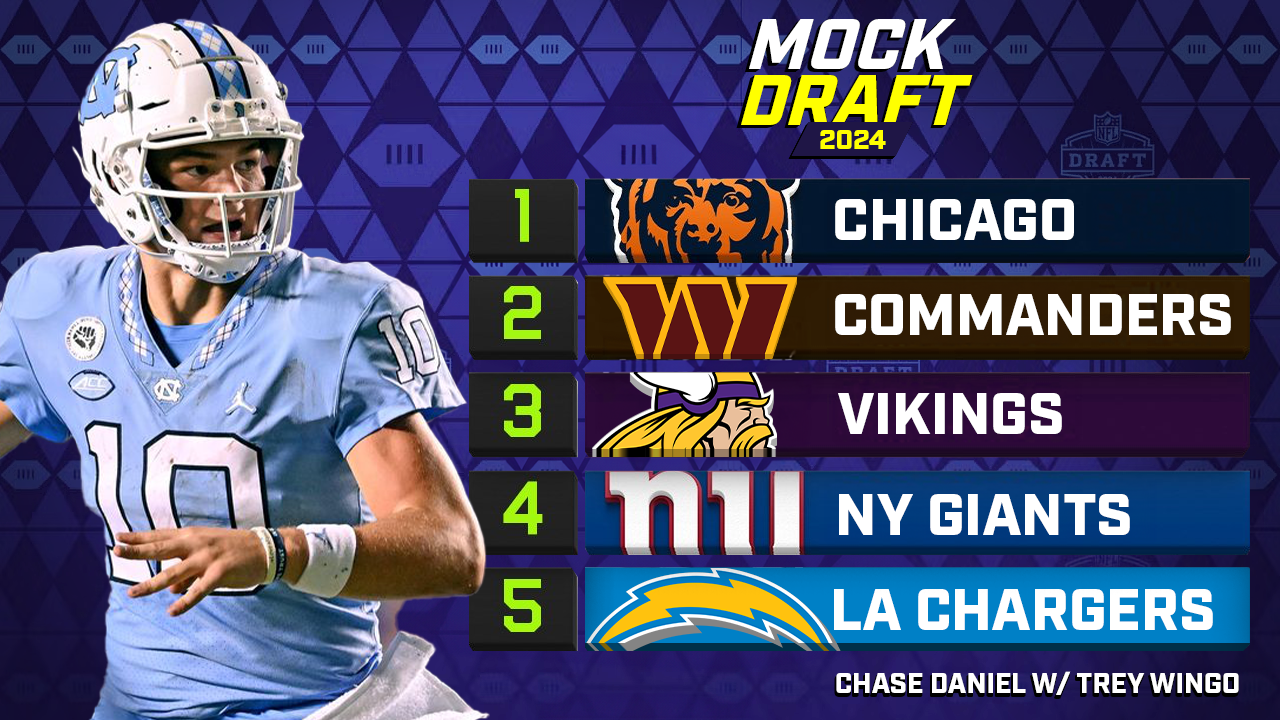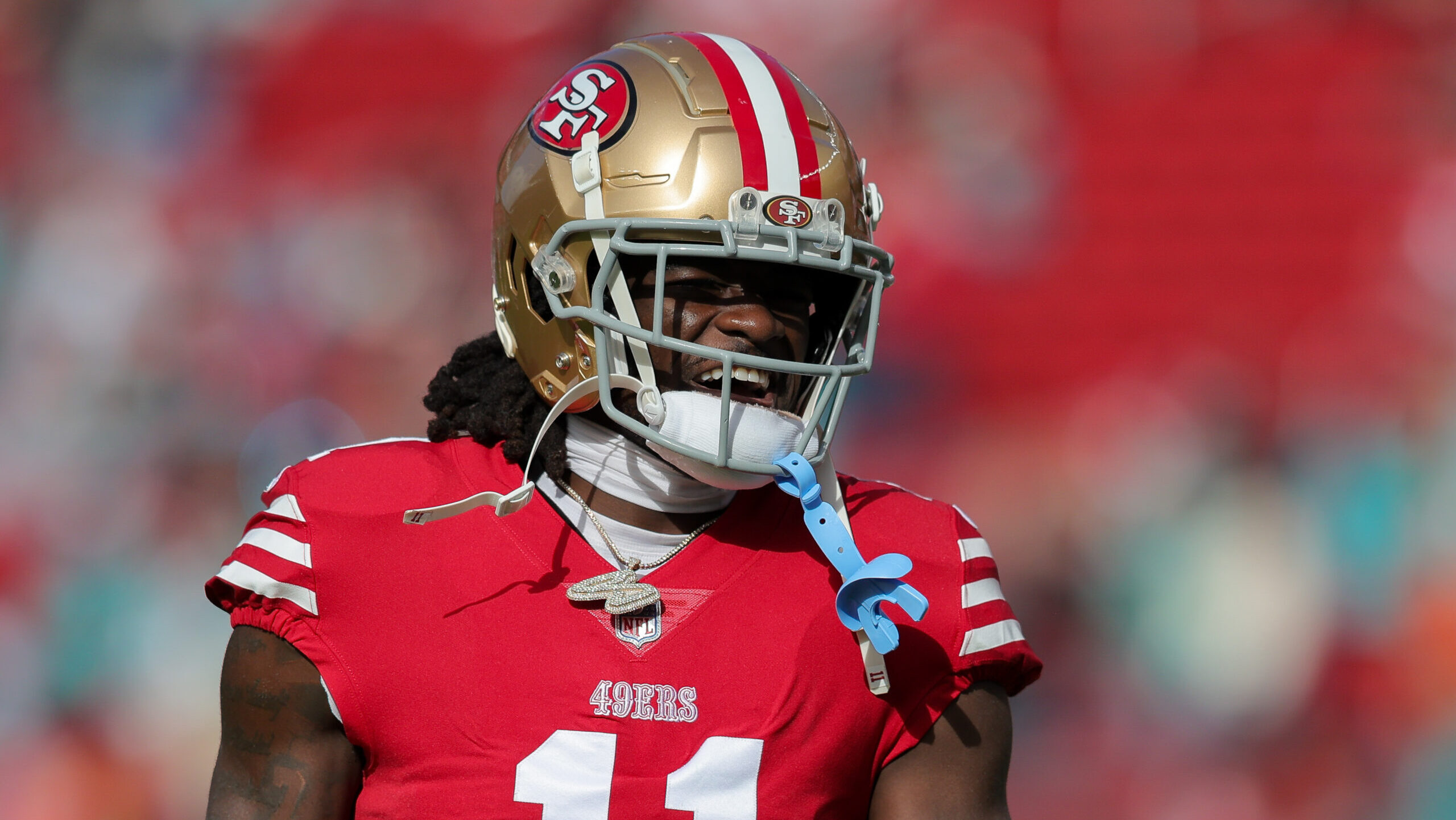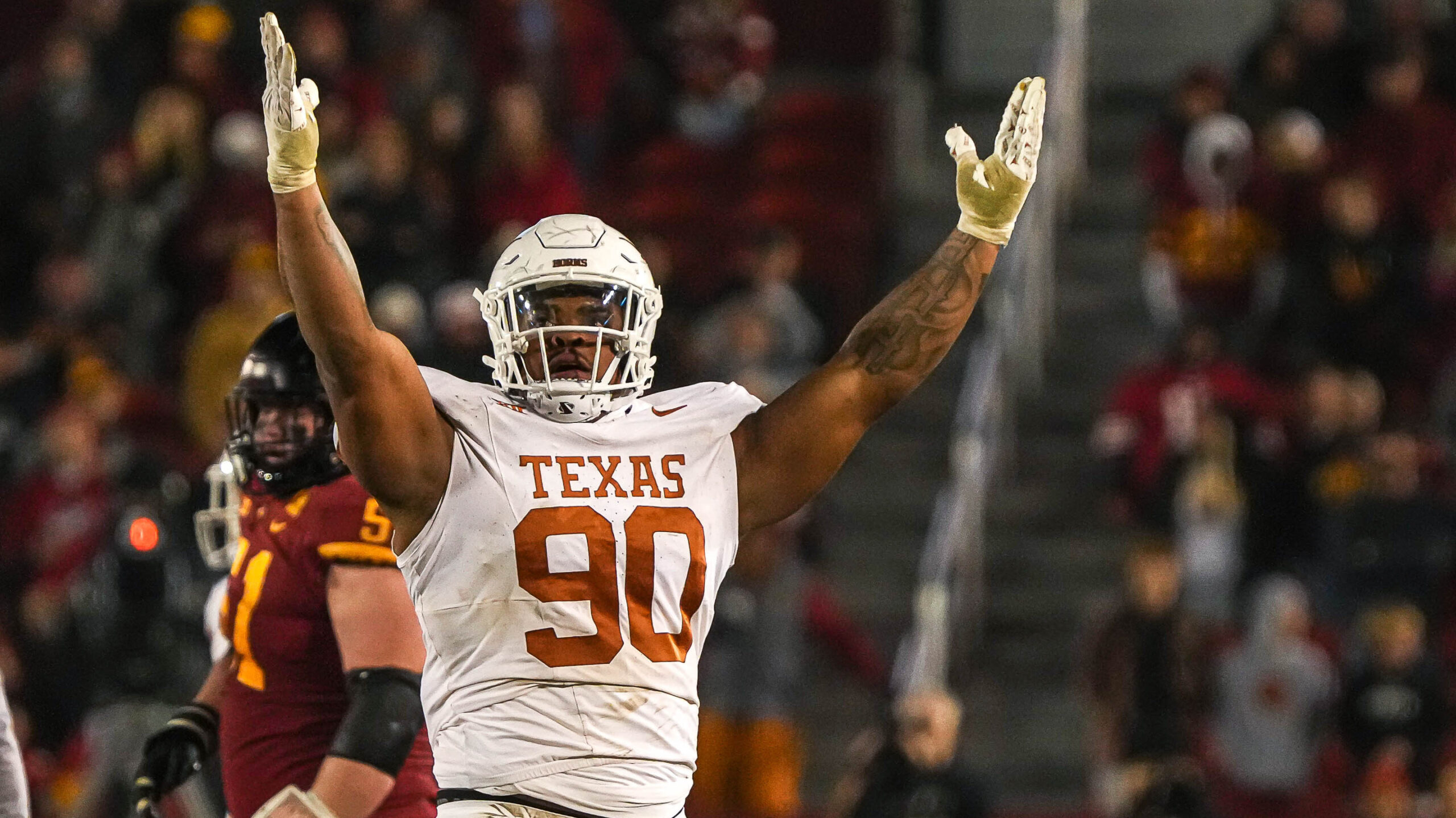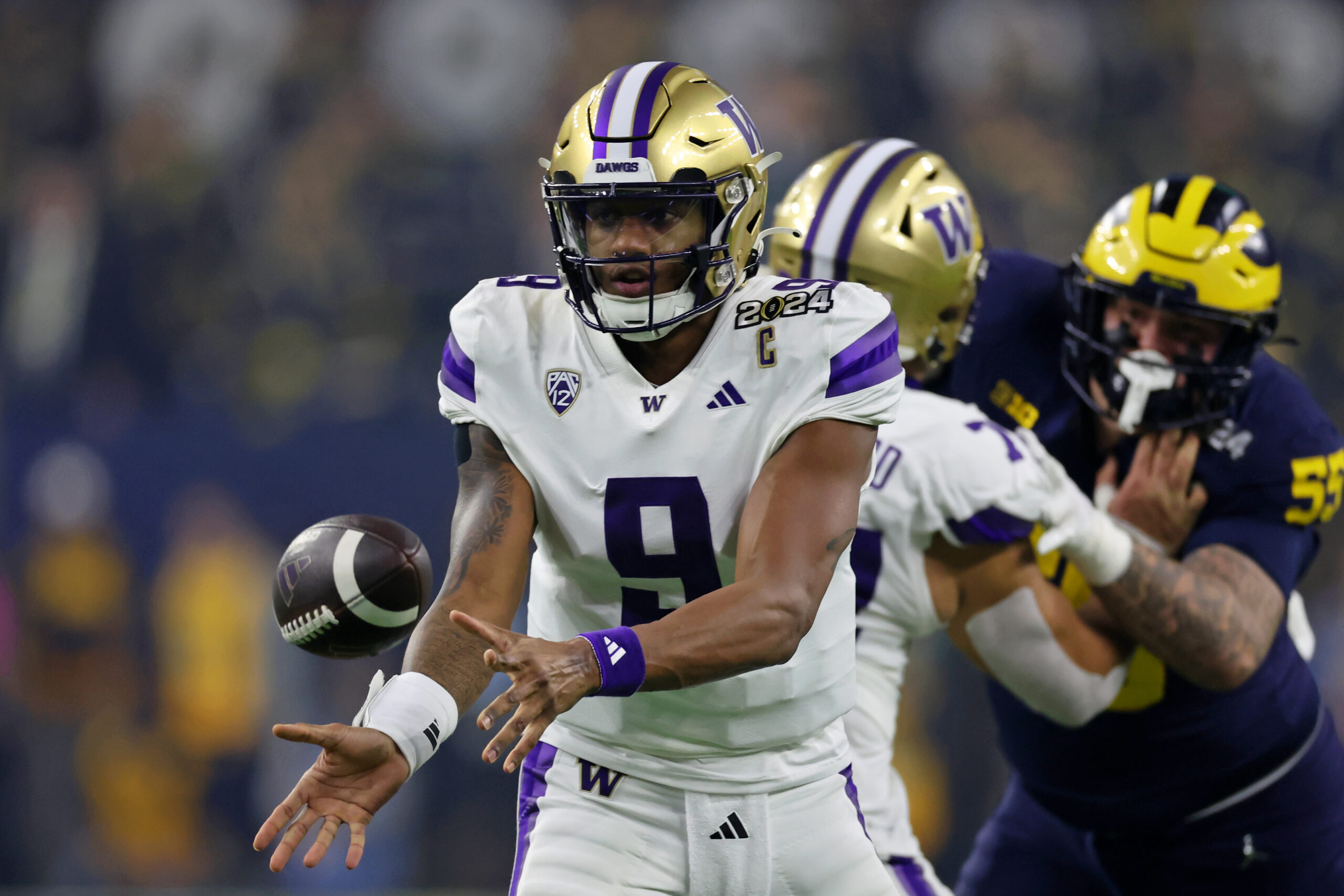NFL Analysis
6/22/22
8 min read
Getting Better: The 7 Clusters of NFL Offseason Additions
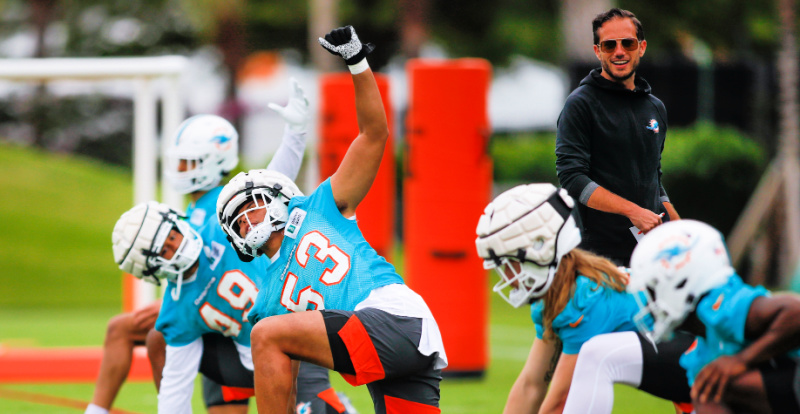
At the start of every offseason, the NFL becomes united in a common purpose: getting better. Of course, teams frequently disagree on how best to attack this goal. Teams such as the Packers prefer to build through the draft while others are willing to spend enormous amounts in free agency.
At an even more granular level, there is wide disagreement about which positions to prioritize. While most teams have seemingly agreed to ignore running backs, the WR room is the latest battleground: despite being a major part of the increasingly-important pass game, there’s almost a never-ending supply of talented wideouts available in the draft. So, should you spend major capital at the position?
Using a technique called K-means Clustering, we can separate teams by the kinds of additions they made this offseason, split up by position. In the search for understanding how teams got better, we’ll be looking only at players new to the team – ignoring extensions and re-signings.
For trades and free agent signings, we evaluated Average Annual Value (AAV), which is just the total contract value divided by the years of the deal. For draft picks, we turn to the ever-valuable Fitzgerald-Spielberger Draft Value Chart in order to recognize that spending the 35th overall pick on a LB is a significantly larger investment than the 85th. Let’s look at how this turned out and go through some of the characteristics of each group.
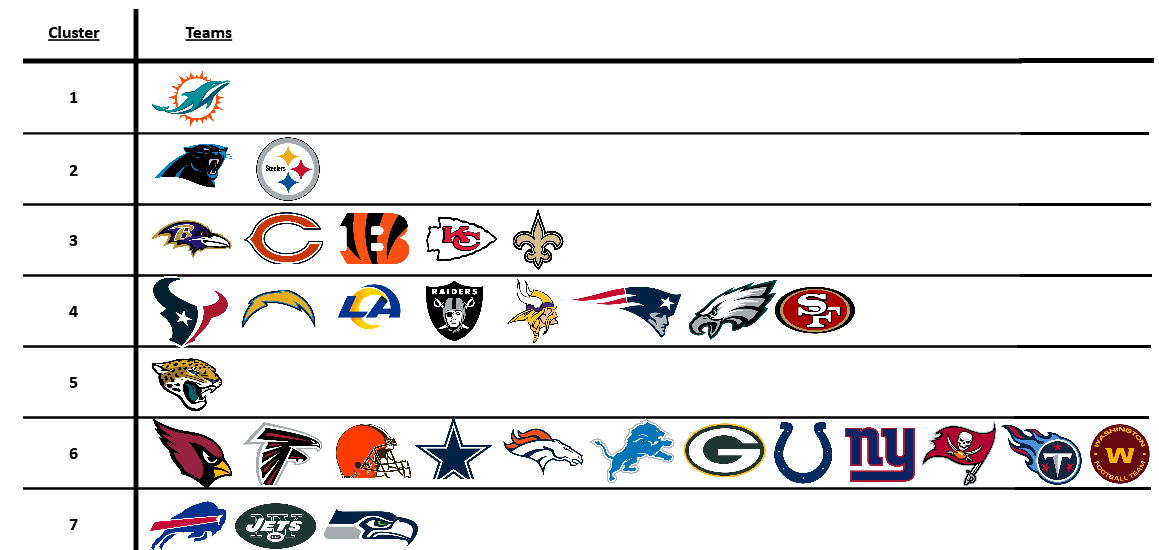
Cluster 1: South Beach or Bust
Team: Miami
While Miami is sitting by themselves, don’t let it be lost just how much the Dolphins stuck out in their exercise. Almost regardless of how many different clusters we used, they nearly always stood on their own.
Why is this? A blatant disregard for positional value is one such explanation — they spent $19.2M AAV on importing notable RBs Chase Edmonds, Raheem Mostert, Sony Michel, and (FB) Alec Ingold, while the rest of the NFL combined for only one notable RB deal. The spending did not stop there, with a league-high outlay on WRs Tyreek Hill and Cedrick Wilson as well as $15M AAV for OT Terron Armstead. Does it matter that they made only four selections in the draft, starting with third-round LB Channing Tindall?
It’s too early to tell, but the Dolphins are pioneering new roster-building strategies and the results will inform decisions for years to come.
Cluster 2: New Eras on the Horizon
Teams: Carolina, Pittsburgh
At an initial glance, it’s strange to see Pittsburgh and Carolina put together. Although both continue to search for a long-term answer at QB, the Steelers have been one of the models of NFL sustainability while the Panthers have been a rollercoaster of Super Bowl appearances and top-five draft picks. However, there’s some interesting connections here.
In free agency, both focused on the interior offensive line: Carolina with Austin Corbett and Bradley Bozeman, Pittsburgh with Mason Cole, and James Daniels. With some LB help added (Damien Wilson and Cory Littleton, Myles Jack, and Genard Avery), they turned to the draft, scooping up an early QB apiece.
Although there’s very different atmospheres and outlooks around each team at the moment, the Panthers and Steelers employed similar strategies this offseason.
Cluster 3: Fix The Offensive Line (And Secondary)
Teams: Baltimore, Chicago, Cincinnati, Kansas City, New Orleans
Some of the league’s most reputable 21st-century franchises (and one glaring exception) fall into Cluster 3, as these were teams that looked to protect their QB.
Although fans called for each of these teams to add offensive weapons, they instead added protectors such as Morgan Moses in Baltimore or Alex Cappa in Cincinnati. The other notable pre-draft connection was making the safety position a priority, with the Saints signing Tyrann Mathieu and Marcus Maye, the Ravens taking Marcus Williams, and Kansas City responding with Justin Reid.
The draft was more of the same on both accounts, with the Bears taking a volume approach for four late-round OL and safety Elijah Hicks, the Chiefs copying the 2021 Jets by drafting five defensive backs, and New Orleans snagging OT Trevor Penning. Will this un-sexy approach pay off?
Cluster 4: Reinforce the Defense, Placate the Fans with a Superstar WR
Teams: Houston, LA Chargers, LA Rams, Las Vegas, Minnesota, New England, Philadelphia, San Francisco
On the other side of Cluster 3’s group of MVPs sits a selection of teams still going by the motto “Defense Wins Championships.” Whether that’s the right move or not is the subject of a different article, but these organizations attacked every level of the defense.
On the modest side, Houston splurged on their assortment of mid-level veterans with DT Maliek Collins, while the Raiders and Vikings added stud pass rushers Chandler Jones and Za’Darius Smith. New England took back CB Malcolm Butler and PHI stole CB James Bradberry from a division rival, but Brandon Staley’s Chargers put them all to shame by adding Khalil Mack, JC Jackson, Austin Johnson, and Sebastian Joseph-Day.
At the draft, these teams turned to complementing their existing teams with IOL and RB selections in the vein of Houston’s Kenyon Green, Philadelphia’s Cam Jurgens, or San Francisco’s Tyrion Davis-Price. Although attention has focused on the WRs added to this cluster, most notably Davante Adams and Allen Robinson, these teams have done the most work on the defensive side of the ball.
Cluster 5: Pay Everyone, Draft Everyone
Team: Jacksonville
Once again, the Jaguars are doing their own thing. Importing seven different players above $8M AAV before using the sixth-most draft capital of any team, this team aims to look vastly different from the organization that has gone 4-29 over the past two seasons.
It’s difficult to identify a singular strategy just because of how monumental this offseason was for Jacksonville: they’ve got 10 projected starters who are new to the team – five on each side of the ball. Whatever the Jaguars were last year, that’s gone, and it’s a new dawn for the franchise.
Cluster 6: The Traditional Model Meets a QB
Teams: Arizona, Atlanta, Cleveland, Dallas, Denver, Detroit, Green Bay, Indianapolis, NY Giants, Tampa Bay, Tennessee, Washington
These are the teams that were relatively inactive when adding pieces to their roster this offseason – with one enormous exception. Nearly every team that added a major QB finds themselves here, from Deshaun Watson, Russell Wilson, and Matt Ryan to Malik Willis, Carson Wentz, and Marcus Mariota/Desmond Ridder.
With squads that were mostly tight to the cap, these teams elected to re-sign their own players and wait for the draft – only outspending the league average at QB through free agency and using more draft pick value at almost every position. It’s notable that this was also the least-consistent cluster, meaning that we saw more variety between these teams than in any other cluster.
Clearly, the league has agreed on paying top dollar for veteran QBs but not how to build around them in the first offseason. It’s anybody’s guess who comes out on top.
Cluster 7: The Hog Mollies
Teams: Buffalo, NY Jets, Seattle
We’ll finish with a group that’s odd to see together. From the AFC Championship runner-up to their in-state rival to a cross-country, cross-conference team in transition, the immediate instinct is to think of this group as “best of the rest.”
However, this isn’t accurate – there were defined patterns in this group as well. Specifically, these teams each looked to beef up the players closest to the ball on every snap.
Seattle’s subtractions made the most noise, but underrated additions in DT Quinton Jefferson, DE Uchenna Nwosu, and DT Shelby Harris will help stuff the run while OT Charles Cross creates gaps on the other side of the ball.
The Jets snagged OG Laken Tomlinson for a surprising $13.3M AAV, but DE Jacob Martin and DT Solomon Thomas might be just as impactful (the team certainly hopes first-round DE Jermaine Johnson II will be).
Finally, Buffalo went 8-1 when successfully clearing 120+ rushing yards and 4-6 when failing. Despite the biases present in those kinds of statistics, it helps explain why the team added players like guards Rodger Saffold and David Quessenberry while looking to blow up opponents with ED Von Miller and DTs Tim Settle, Jordan Phillips, and DaQuan Jones.
The other similarity in this group? A high value on the TE position, with OJ Howard, Noah Fant, C.J. Uzomah, and Tyler Conklin all looking to make life easy for their new QBs. While similar processes don’t necessarily lead to similar results, let’s see if the Jets and Seahawks were successful in jumpstarting their rebuilds with this approach.


